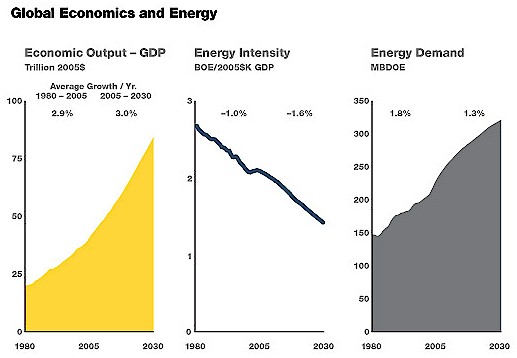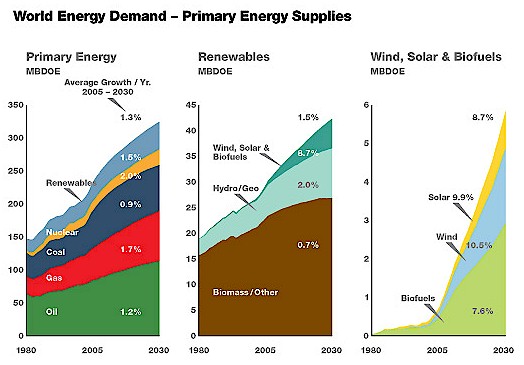|
Mainland High School
Cutting the Cord: ISTF 07-1726 |
||||||||||||||||||||||
|
Home
Introduction Components One Two  Product Product
Three Microwave Research W. C. Brown Generators History Phased Arrays Properties Rectennas Semiconductors Solar Satellites Superconductors Moon Research Colonization Helium-3 Fusion Geography Mining Resources Project Assessment Bibliography Glossary Team |
Component Three
Provide a forecast of what the workforce demand would be over a five-year period to produce and market your team's technical application or process. Include the impact such production would have on the marketplace.
The economic impact of this proposal is far reaching and very positive on the large scale. It will greatly influence many areas of the national and global economy. It will create cheaper power, reduce dependence on foreign oil, decrease pollution, and lessen the effects of global warming. However, it will have a negative impact on the workforce because many people who work to generate energy by lesser means will be phased out.
As global population increases and advances economically, it seeks better living standards, thus more energy. The first graph of this chart shows economic growth in terms of gross domestic product (GDP) projected to 2030. GDP rose on average 3 percent every year from 1980 to 2005, and global GDP is projected to grow at the same rate to 2030. As the economies grew, they became more energy efficient. The second graph shows the energy efficiency of the global economy in terms of energy intensity, energy demand (barrels of oil are equivalent energy) divided by GDP. From 1980 to 2005, energy intensity has decreased 1 percent every year. Rate of improvement in energy intensity is projected to increase 1 percent per year. The end result is that energy intesity will be 50 percent below the level of 1980. The third graph shows global energy demand in terms of millions of barrels per day of oil equivalent. Energy demand is projected to increase on average 1.3 percent per year to 2030, reaching 325 MBDOE. The next chart shows world energy demand in terms of primary energy supplies projected to 2030. Oil is expected to increase 1.2 percent per year because of transportation and industrial demand for oil. Because of the demand for efficient fuels with low carbon intensity gas consumption is expected to increase 1.7 percent per year. Coal consumption is expected to increase less than 1 percent per year because coal has a high carbon intensity. Nuclear power consumption is expected to grow significantly beyond 2020. Renewable supplies are projected to have a net growth of 1.5 percent per year overall. However, the majority of this sector consists of biomass, wood, charcoal, and dung, with relatively slow growth. Hydroelectric and geothermal energy are projected to increase nearly 2 percent per year, limited to the availability of natural sites where they are collected. In stark contrast, modern renewables, wind, solar, and biofuels, are projected to grow rapidly with support from government subsidies and mandates. Biofuels, primarily ethanol, are projected to grow at 8 percent per year, and wind and solar energy are projected to grow at 10 percent per year. The total share of modern renewables is projected to be about 2 percent. America's economy will be boosted in several ways. First, by reducing foreign oil imports, more money will stay in circulation in America, and our import costs will be decreased. Companies will have greater profits because their operating costs will decrease, and customers of utility companies will save more from a competitive market. Because this product is mostly automated, it will be maintained by a handful of well-paid engineers, as opposed to the multitude of engineers needed to maintain an oil well or coal mine. As a result, many people who previously worked at these facilities will be no longer needed. However, with the loss of jobs in energy production based on fossil-fuel supplies, new jobs are expected to arise from the development of new energy production methods, and lower energy costs for research, transportation, and manufacturing. This situation is best explained by Mr. Michael Friend, Advanced Program Coordinator at Pima Community College, Workforce and Business Development,
"While it is true that some jobs will be phased out as the means of energy production changes, the cheaper energy will provide an increase in productivity, which historically has always resulted in new jobs...the development of air travel initially hurt the railroads and shipping, but ultimately spurred development of new industries and fueled economic growth...the single greatest impetus to economic growth in the 21st century may result from implementation of new sources of energy. Economic growth equals new jobs."1
Because of the reduced workforce, energy delivered by microwave power transmissions will be much cheaper to produce in the long run. The necessary equipment and the transportation to the moon will be expensive, therefore this operation will have large capital investment. However, the project will eventually pay for itself and continue to save money because the process will remain virtually autonomous throughout its life. After the initial investment, the only additional costs will be the labor of maintenance engineers (comparable in salaries to the current salaries of nuclear power technicians) and minor maintenance from obsolescence of parts. Therefore, in the long-run, our project will be economically feasible. It has been suggested that the energy generated from fusion on the moon could also be exported. Because the moon is not always facing a single area of the earth, the transmitter cannot constantly beam energy to a single area. However, when the transmitter adjusts its focus and aim, it can transmit power to other nations. This would give America another export, and solidify its position in the next generation of energy technology.
Give two examples of undergraduate or graduate degree programs in science or engineering that directly relate to your team's NCT technical application. For each program, be sure to include the following:
Department of Electrical and Computer Engineering The Texas A&M Department of Electrical and Computer Engineering is an extraordinary program that is constructed to evoke in college students a great interest in pursuing this type of career. R. Buckminster Fuller once said that, "We are called to be the architects of our future, not its victims," a statement designed to challenge students. This department helps students reach a new height of success once they complete this intriguing program. Electrical Engineering
Computer Engineering
MIT - Department of Electrical Engineering and Computer Science MIT's Department of Electrical Engineering and Computer Science has been a major leader in the advancing the research in objects such as electronic circuits and systems, lasers and semiconductors and power and energy systems and many others. The department hopes to be able to keep up their record of innovation and leadership in education and research (in their electrical engineering and computer science).
Due to the critical importance of Helium-3 and fusion to our project, we have included a third undergraduate
program specializing in fusion research. University of Wisconsin-Madison - Fusion Technology Institute At the University of Wisconsin-Madison, the Fusion Technology Institute has been trying to develop safe and economical fusion energy resources to be used in the 21st century. The Fusion Technology Institute creates near-term commercial products that advance the quality of human life with the devlopment of fusion power.
Develop an idea for a new science and/or engineering degree program that might emerge given the advancements in scientific knowledge that the team has identified. Provide a title and 100-word description of this new degree program.
In addition to building a basic background in microwave technologies and sciences, our comprehensive graduate degree program Microwave Power Transmission Technologies (MPTT) will prepare students to design, manufacture, and modify our product or seek further advanced degrees in microwave-based technologies. We recommend that our students have a basic background in Electronic Analysis and Design, Power System Engineering, RF and Microwave Devices, as well as Electric Power Systems. The research we conduct will hopefully instill a better understanding of microwave theory, antenna and rectenna design, and power systems involved in the wireless transmission of power.
ExxonMobil - global economics and energy http://www.exxonmobil.com/Corporate/energy_outlook_gee.aspx ExxonMobil - world energy demand http://www.exxonmobil.com/Corporate/energy_outlook_primaryenergy.aspx Massachusetts Institute of Technology - Course 6: Electrical Engineering and Computer Science http://student.mit.edu/catalog/m6a.html Massachusetts Institute of Technology - Department of Electrical Engineering and Computer Science http://web.mit.edu/catalogue/degre.engin.elect.shtml Massachusetts Institute of Technology - Welcome to EECS http://www.eecs.mit.edu/ Texas A&M University - Department Welcome http://www.ece.tamu.edu/Department/DepWelcome.htm Texas A&M University - Course Descriptions http://www.tamu.edu/admissions/catalogs/07-08_UG_Catalog/course_descriptions/index.htm Texas A&M University - Department of Electrical and Computer Engineering http://webapps.ee.tamu.edu/ University of Wisconsin-Madison - Courses http://www.wisc.edu/pubs/ug/07engineering/engphys.html#courses University of Wisconsin-Madison - Fusion Technology Institute http://fti.neep.wisc.edu/fti Michael Friend 1email correspondence: February 26, 2008 |
|||||||||||||||||||||


 the URL address of the institution,
the URL address of the institution,




